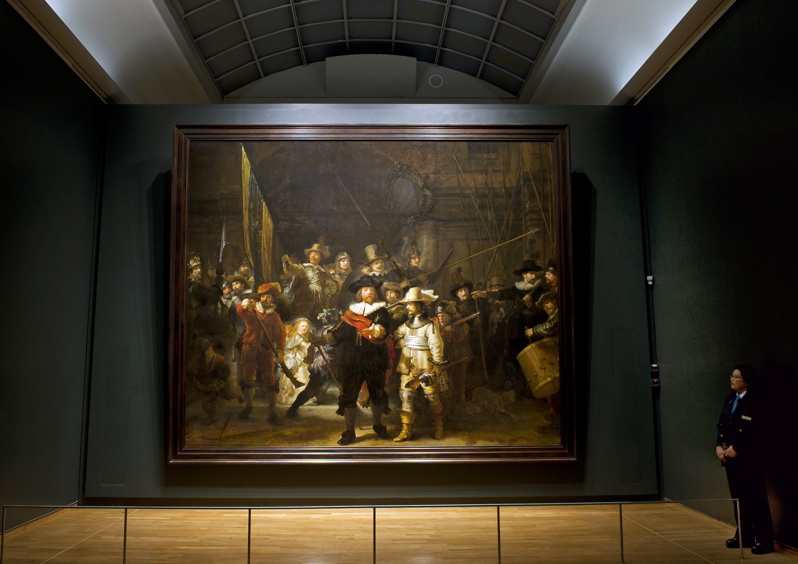Is LED light quality improving? They're illuminating Rembrandt


Critics (oh no, not me, never) have pointed out that LED light, for all of its energy saving virtues, lacks the warm hue of incandescents.
Manufacturers have been working to improve that, and by gosh, maybe they've cracked it: When Amsterdam's venerable Rijksmuseum reopens next week, 3,800 LED spot bulbs will shed light on 7,500 paintings by Dutch masters including Rembrandt and Vermeer, and on works of art dating back to the Middle Ages.
"We chose LED lighting for firstly, the high quality of the light emitted, and secondly the color rendering of LED lighting, which is very close to that of daylight," the museum's head of exhibitions Tim Zeedijk says in a press release issued by Royal Philips Electronics, which supplied over a mile of LED lighting.
Conventional incandescent bulbs burn a filament - they have a warm hue because they are fire. LED manufacturers have been "warming up" the look of LED light by adding substances such as phosphor
It wasn't just the LED light tone that impressed the Rijksmuseum. Zeedijk noted that the LEDs also protect the paintings because "there is hardly any radiation of heat and no harmful UV beams being emitted."
LEDs - light emitting diodes - are rudimentary semiconductors that compared to incandescent bulbs (such as halogens, often used at museums) convert a lot more energy into light rather than losing it as heat. They use only about 20 percent of the electricity of a conventional light bulb.
Another advantage of LED bulbs is their reputed long life of 25 years or more, which reduces replacement and maintenance costs.
On top of that, they lend themselves to digital control. The Rijksmuseum will dim and brighten its lights using an iPad. And to think that Rembrandt's tablet was a mere palette.
Photo from Philips.
A palette of LED stories on SmartPlanet:
- A bright, indestructible, burn-proof, energy saving mechanic's lamp
- The LED price tipping point is here
- The key to LED brightness: Graphene
- Hasta la vista, incandescent light bulbs!
- For $30, the world’s most energy efficient light bulb
- Another myth of LED energy savings
- Goodbye LEDs, hello plastic bulbs?
- The myth of LED energy savings
- How will LEDs affect our museums' artwork?
- More LED truths and half-truths
- When good lights go bad: LED breakdown
- The hot and cold of LED lighting
This post was originally published on Smartplanet.com